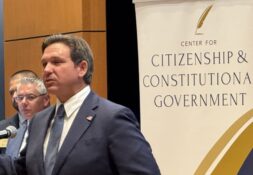The multi-trillion dollar bill is comprehensive, but faces a difficult path to becoming law
At the end of March, President Biden addressed a crowd at a trade school in Pittsburgh, Pennsylvania, the same city where he kicked off his presidential campaign. His speech outlined the “American Jobs Plan,” a public investment project that not only covers more traditional infrastructure priorities like roads, bridges, airports, railways, and mass transit, but also included upgrading the nation’s aging water and sanitation systems, renewing the electrical grid, and ensuring high-speed broadband internet access to all Americans, especially in rural areas.
The plan would cost nearly 2.3 trillion dollars over the next ten years, funded by raising the corporate tax rate to 28 percent from the current 21 percent, as well as closing a variety of loopholes that allow multinational corporations to make use of “tax havens” to avoid paying taxes.
The first major allocation of the infrastructure package is 621 billion dollars towards “transportation infrastructure and resilience,” including 115 billion dollars for the modernization of roads, highways, and bridges. For railways, President Biden proposes 80 billion dollars towards improvements for Amtrak, a modernization of the Northeast Corridor—the busiest rail line in the nation—and improvements for freight rail. Additional provisions include 85 billion dollars for mass transit, 25 billion dollars for airports, and 17 billion dollars for inland waterways and canals.
The single largest investment in this category, however, is 174 billion dollars to “win the EV [electric vehicle] market.” This includes grant programs to create a national network of EV chargers by 2030, as well tax incentives to buy American-made EVs, a boon to domestic automakers like Ford and General Motors who have been pouring funds into plug-in vehicles in recent years in an effort to catch up to Elon Musk’s famous Tesla Motors.
The second major component of Biden’s plan focuses on water infrastructure, the electrical grid, and broadband internet access, with 111 billion dollars to replace lead and other aging service pipes, and 100 billion dollars to modernize the electrical grid and move towards cleaner energy sources. Another 100 billion is allocated towards the ambitious goal of “bring[ing] affordable, reliable, high-speed broadband to every American.”
According to a 2019 Pew Research poll, only 63 percent of rural Americans report having broadband internet access at home, which the FCC has defined since 2015 as 25 megabits download speed and a 3 megabits upload speed. However, many rural areas still depend on satellites or DSL phone lines for internet access, technologies which often come nowhere close to the FCC’s broadband speed criteria. With the ongoing coronavirus pandemic proving how essential high-speed internet access is to modern society, it is certainly something that is likely to be addressed in the near future.
The last components of Biden’s infrastructure plan do not address more traditional infrastructure priorities as the others do. For instance, 213 billion dollars is allotted for new and renovated housing and 100 billion for schools. Other provisions include 400 billion for healthcare for the elderly and disabled and a combined 500 billion for competing with China and other foreign rivals on scientific research and for investments into domestic high-tech manufacturing. Lastly, the bill addresses labor rights and job training programs. For the latter, it allocates 100 billion dollars and for the former it includes the Protecting the Right to Organize, or PRO, Act, which would prevent certain anti-labor union actions by employers and overturn “right-to-work” laws which prevent unions from collecting dues as a condition of employment.
With Democrats holding an extremely thin majority in the House of Representatives and facing a 50-50 split in the Senate, such a massive spending bill is sure to face a rocky road if it is to pass Congress. Republicans in both chambers largely panned the bill, saying that it was too broad and too expensive, and that some of the provisions in the bill, like those focused on climate change or labor rights, should not be included in a package ostensibly for “infrastructure.” NBC News reported that Senate Minority Leader Mitch McConnell labeled the bill “a Trojan horse called infrastructure,” and said he was “not likely” to support the package “[i]f it’s going to have massive tax increases and trillions more added to the national debt.”
Republicans, for their part, crafted their own infrastructure proposal totaling 568 billion dollars, according to NPR. In contrast to the President’s wide-ranging plan, the GOP bill focused more on areas which traditionally have made up the category of “infrastructure,” namely “roads and bridges, public transit systems, rail, drinking water and wastewater infrastructure, ports and inland waterways, airports, safety, broadband infrastructure and water storage.”
Senate Democrats have already begun to reject the GOP bill, with POLITICO reporting that progressive Senator Elizabeth Warren of Massachusetts “summarized Democrats’ feelings by observing that ‘the Republican proposal does not meet the moment.’” Due to Vice President Kamala Harris’ tie-breaking vote, Senate Democrats could make use of budget reconciliation to force the bill through that chamber, but President Biden has made it clear in recent weeks that he wishes to work with the opposing party on this issue, in line with his inauguration promise to unite the country and bypass political divisions. If talks with Republicans break down, Senate Majority Leader Chuck Schumer will be forced to make use of the reconciliation process as they did at the beginning of March to pass Biden’s coronavirus relief bill.
With foreign rivals such as China rapidly outpacing the United States in terms of infrastructure investment, especially in technologically-advanced sectors like high-speed rail, support for domestic infrastructure is more important than ever. Whichever bill emerges from the partisan bickering in Congress will take several months to make its way onto President Biden’s desk, but the necessity of taking prompt and worthwhile action will only become more urgent as the “bones” of the nation continue to crumble.
Luke Koenigsknecht is a sophomore from Grand Rapids, Michigan studying computer engineering. He can often be found in the Knights of Columbus building. In his spare time, he enjoys reading as well as playing games or solving puzzles. He can be reached at lkoenigs@nd.edu.
Photo credit: President Joseph R. Biden delivers a speech in Pittsburgh, Pennsylvania unveiling his long-awaited infrastructure plan. Evan Vucci/Associated Press






Leave a Reply